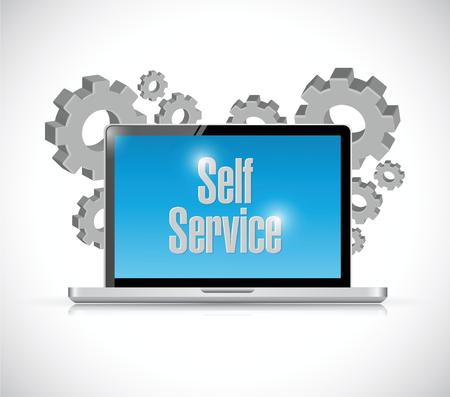Blog
What are the pros and cons of self-serve advertising?
 Selling advertising on your website can take many different forms, and it really all depends on what you are looking to get out of it. For some publishers, advertising is to attract big brands willing to pay a premium for their prime ad spaces. Alternatively, there are others who prefer self-serve advertising that could potentially provide a frequent flow of advertising orders. The idea here is that money can be made with volume sales as opposed to relying on a handful of big advertisers. There are some definite pros and cons to self-serve advertising, so let’s take a closer look.
Selling advertising on your website can take many different forms, and it really all depends on what you are looking to get out of it. For some publishers, advertising is to attract big brands willing to pay a premium for their prime ad spaces. Alternatively, there are others who prefer self-serve advertising that could potentially provide a frequent flow of advertising orders. The idea here is that money can be made with volume sales as opposed to relying on a handful of big advertisers. There are some definite pros and cons to self-serve advertising, so let’s take a closer look.
Advertiser is in control
Since the advertiser is in control with this form of advertising, they can create the ads to perfectly fit what they want, and they can change or edit their own ads whenever they need to. This allows them to quickly change on-the-fly when an ad is underperforming.Access is available anywhere 24/7
Dealing with an advertising salesperson means having to work with someone’s schedule. Thus, advertisers lose some flexibility in that scenario. With self-serve advertising, they can access their ads and change them as needed, all without having to go through a middleman or needing assistance from anyone. Working on their own schedule is a big advantage.Publisher cuts down on costs
Transaction and processing costs are minimized with self-serve advertising. If you provide clear instructions and the ad system is easy to use, the advertisers will perform all the tasks necessary to create and setup their ads. Thus, it saves you and your team time and money. All the money made via advertising will likely go into your pocket.Publisher loses personal touch
A big part of selling ad space directly is building relationships with your advertisers. This relationship often bring you loyal clients and more indirect deals. It is not something that can be easily done with self-serve advertising because you could potentially have many advertisers coming and going at any given time. However, you can still incorporate some personal touches. For example: auto-generated welcome and follow-up messages, monthly summary, or quarterly follow-up calls.Some training is required
Self-service advertising does not have a single standardized process or workflow across all sites. Additionally, not all advertisers have experience with self-serve advertising and your potential advertisers may have never experimented with this type of advertising before. This means there is initially a bit of a learning curve in place. You are going to need to devote time to create clear instructions and show them how self-serve advertising works and how to place an ad order with you. You could potentially end up spending a lot of your time answering the same questions over and over again so make sure you have a document with instructions to share.Details are displayed upfront
All of the details of your self-serve advertising program need to be made available to advertisers from the start so they know the details and can make a decision on their own. That includes making sure that upfront pricing is in place, which can mean potentially running the risk of pricing yourself too high and driving away potential advertisers or giving away your competitive edge.As you can see, there are some very definite pros and cons of a self-serve advertising program. Therefore, make sure to evaluate them to see if it is something that fits into your publishing plans. If you have decided it is a suitable option or you just want to experiment with it for awhile, choosing a good ad server that supports self-service advertising is the next logical step.
Related
- What is self-service advertising?
"Finding advertisers to place ads on your website can be a full-time job all by itself. It can be costly to hire and maintain a dedicated ad sales team. " More
- Should you offer self-service advertising on your website? (part 3)
"Self-serve advertising is a do-it-yourself solution designed for advertisers to create and publish their ads with minimum effort from publishers. It helps website owners to handle many advertisers instead of just a few large advertisers without spending too much of their valuable time for ad serving tasks. " More
- Should you offer self-service advertising on your website?
"Running a website, especially a high quality site, can take up a lot of your time. If you don’t have the funds to hire someone to run certain aspects of the business, it can quickly become overwhelming. " More
Featured
- Ad serving opportunities for different publisher types (part 2)
- Ad serving opportunities for different publisher types
Popular
- Ad serving opportunities for different publisher types (part 2)
- How to design a good ad banner (part 2)
- Opportunities and challenges of video ad serving during live events
- Ad serving opportunities for different publisher types
- What to do when your website is showing a wrong ad or is not showing an expected ad? (part 2)
- What to do when your website is showing a wrong ad or is not showing an expected ad?